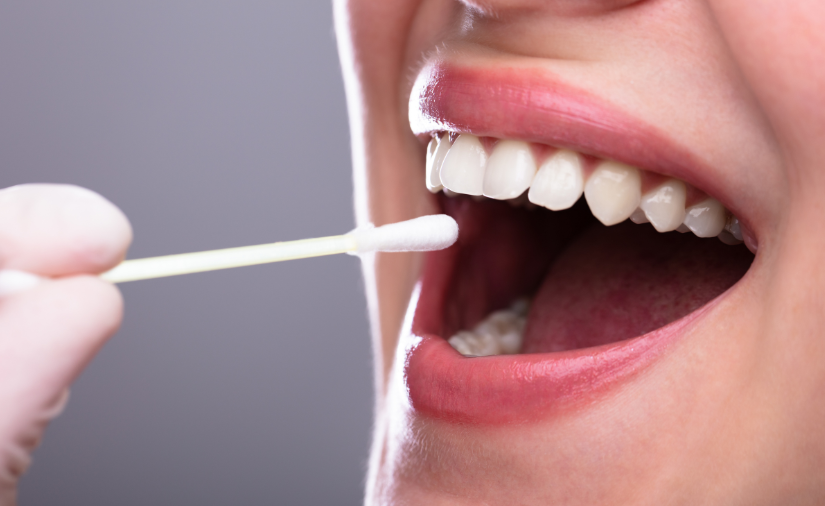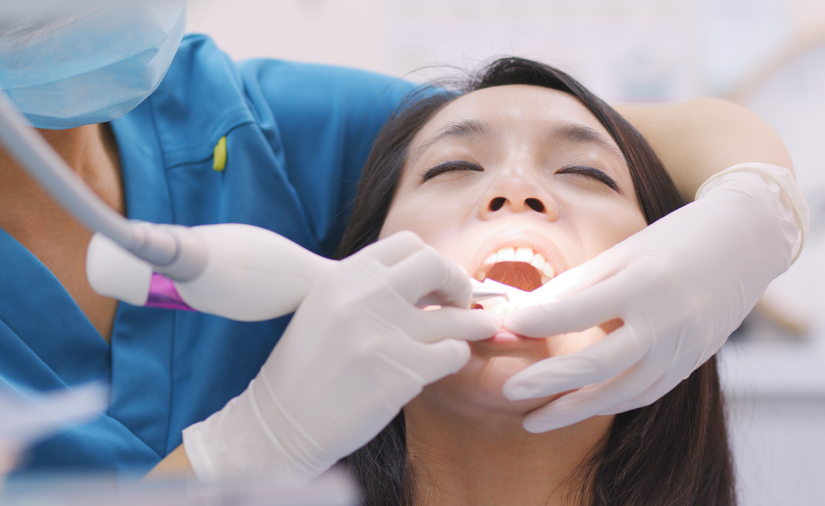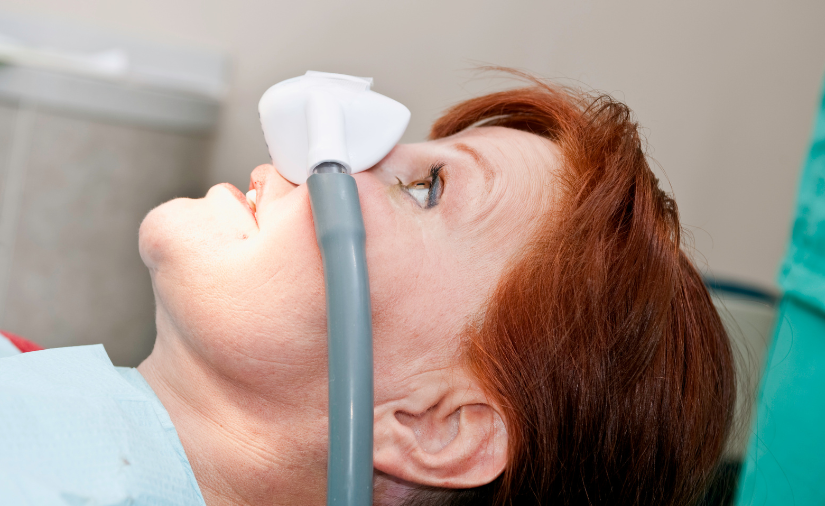By: Dr. Elizabeth Egger
If you’re a coffee-lover or a wine connoisseur, you’ve probably considered a couple teeth-whitening solutions before. In fact, there are so many foods and drinks that can stain our teeth, you’d be hard pressed to find a person who wasn’t interested in making their smile whiter and brighter!
If at-home treatments like whitening toothpastes and whitening strips aren’t giving you the results you’re looking for, you might want to consider an in-office whitening treatment. When it comes to choosing between bleaching your teeth and having veneers made, however, there’s a lot to consider. The option that’s best for you is usually based on your level of staining, your budget, and your tooth sensitivity. Here’s a little about the professional options we offer:
Opalescence Go!
Pros:
- Can take it home with you from your dental appointment
- Effective
- Inexpensive
- Non-invasive
Cons:
- Takes about 10 days at home
- More sensitivity than other professional options
- Not effective on restorations
- Won’t remove deep stains
- More “gooey” to use
Zoom! Whitening
Pros:
- Fast, takes 2 hours in-office
- Effective (8 shades whiter)
- Less expensive than Kor
- Non-invasive
Cons:
- Possibly more sensitivity than Kor
- Not effective on restorations (bonding, veneers)
- Won’t remove deep stains
The Zoom! bleaching process is very simple. Dr. Elizabeth or Dr. Jeff’s team will first isolate your teeth, then apply peroxide gel to your teeth. A low heat light is placed close to your teeth that activates the whitening gel. You will undergo up to four 15-minute cycles during your session.
Kör Whitening
Pros:
- Extremely effective (up to 16 shades whiter)
- Non-invasive
- Removes even tetracycline staining
- Least amount of sensitivity
Cons:
- About double the cost of Zoom!
- Not effective on restorations (bonding, veneers)
- Time-consuming – sometimes requires 4 in-office sessions and time at home
The Kör treatment was developed by Dr. Rod Kurthy in response to the lack of consistency in results of traditional whitening products, and complaints of sensitivity from patients post-treatment. This treatment is extremely effective, bleaching some patients’ teeth up to 16 shades whiter! It’s also the least sensitive option due to the science Dr. Kurthy used to develop his product, making it the perfect option for people with extremely sensitive teeth.
The Kör treatment involves both at-home and in-office processes. After an impression appointment and two weeks prior to your in-office appointment, Dr. Jeff or Dr. Elizabeth will give you an at-home kit that includes a dental tray and a special gel. This tray must be worn overnight, every night before your appointment. The at-home treatment allows for longer exposure to the gel, resulting in even whiter teeth.
When you come in for your appointment two weeks later, Dr. Elizabeth or Dr. Jeff’s team will apply a breathing gel to your teeth to finish the treatment. Sometimes a second in-office appointment is also needed, depending on the desired results.
Veneers as a Whitening Solution
Pros:
- Extremely effective (you may choose your shade of white)
- Completely masks all staining
- Long-term results
Cons:
- More costly
- Alters tooth structure
- Some tooth sensitivity
- Time-consuming
Teeth bleaching works very well for lighter stains caused by food and drink. For more stubborn staining that can’t be removed by the bleaching process, you may consider getting veneers. This is the most involved whitening option of the three listed in this post.
Veneers are a very thin ceramic shell that covers your existing tooth structure. In placing these new veneers on your teeth, you can fix the look of issues such as staining, cracked teeth, spaces, misaligned teeth, chipped teeth, and more.
The process of getting veneers involves at least two to three visits to Eggert Family Dentistry. During the first visit, we will discuss the shape and look of your veneers and develop a plan together. On the second visit, we will prepare your teeth for the placement of the veneers by removing a thin layer of enamel. We will also take an impression of your teeth, and provide you with a beautiful temporary solution to cover your teeth over the next few weeks. Your final visit will take place two to three weeks later, during which Dr. Elizabeth Eggert or Dr. Jeff Eggert will place your brand-new veneers.
Let Eggert Family Dentistry Brighten Your Smile!
If you’re unsatisfied with the results of over-the-counter whitening treatments, call Eggert Family Dentistry at 651.482.8412 to discuss potential in-office whitening solutions and schedule an appointment. Dr. Elizabeth Eggert and Dr. Jeff Eggert will be able to help you decide which option is right for you. We look forward to helping you achieve the smile you’ve been dreaming of!











